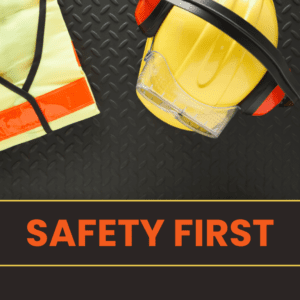How to Avoid 20 Common ADA Compliance Pitfalls

The Americans with Disabilities Act (ADA) was established to ensure equal access and opportunity for individuals with disabilities, mandating accessibility in public and private spaces. ADA compliance is essential for businesses, government institutions, and other organizations to avoid lawsuits, hefty fines, and, most importantly, to foster an inclusive environment. Despite best efforts, many organizations make common mistakes in adhering to ADA regulations. In this article, we’ll discuss 20 of the most frequent ADA compliance errors and provide tips on how to avoid them.
-
Incorrect Accessible Parking Spaces
Accessible parking spaces are often one of the most visible signs of ADA compliance. However, many organizations fail to provide the correct number of accessible parking spaces based on the size of the parking lot. Spaces must also be properly marked, provide an adjacent access aisle, and offer adequate signage with the International Symbol of Accessibility.
To avoid this, organizations should reference the ADA’s parking guidelines, ensuring the required number of accessible spaces and proper layout.
-
Lack of Curb Ramps
Curb ramps are crucial for providing wheelchair users and others with disabilities access to sidewalks and building entrances. One common ADA mistake is either not having curb ramps at all or having ramps that are too steep, narrow, or obstructed.
To ensure compliance, businesses should install curb ramps with a slope of no more than 1:12 and verify that no barriers, such as planters or trash cans, block access.
-
Inaccessible Entrances
Many buildings still have steps leading up to their main entrances, creating a barrier for individuals who use wheelchairs, walkers, or crutches. Additionally, even when ramps are present, they may not meet ADA standards for slope and handrails.
Ensure that all entrances are accessible or provide a compliant alternative entrance with appropriate signage indicating where the accessible entrance is located.
-
Improper Door Hardware
Doors that are difficult to open or feature hardware that requires tight grasping, twisting, or pinching can pose a significant barrier to individuals with limited hand mobility. Traditional doorknobs are a common offender.
To fix this, businesses should replace traditional knobs with lever-style handles or other ADA-compliant hardware that can be easily operated with one hand and does not require strong grip strength.
-
Lack of Proper Signage
Signage is a critical component of ADA compliance, particularly in buildings with accessible routes, restrooms, and emergency exits. The most common mistakes include using small font sizes, failing to include Braille, or placing signs too high for wheelchair users to read.
ADA-compliant signage should feature both raised text and Braille, and be mounted at a height of 48 to 60 inches from the floor.
-
Non-Compliant Restrooms
Public restrooms are frequently out of compliance with ADA standards due to issues such as inadequate maneuvering space, improperly installed grab bars, or sinks that are too high for wheelchair access. Restroom doors and stalls may also be too narrow.
To correct these issues, businesses should follow ADA guidelines for restroom layout, ensuring adequate space for wheelchair users to navigate and all fixtures, including grab bars, are installed at appropriate heights.
-
Lack of Visual and Audible Alarms
In emergency situations, it’s essential that individuals with both hearing and visual impairments can safely evacuate a building. Failure to install visual and audible alarms is a common ADA compliance issue.
To be compliant, ensure that your building is equipped with emergency systems that provide both sound and flashing light warnings, offering adequate notice for individuals with different sensory needs.
-
Inaccessible Customer Service Counters
Many customer service counters, checkout areas, or reception desks are designed too high for wheelchair users, making it difficult for them to engage in face-to-face communication.
ADA guidelines require that at least one section of a service counter is no higher than 36 inches from the floor, allowing full accessibility.
-
Inaccessible Websites
ADA compliance isn’t just about physical spaces. Websites also need to be accessible to individuals with disabilities, such as those with visual impairments. Common mistakes include not providing alternative text for images, failing to use proper heading structures, and offering videos without captions.
Organizations should ensure their websites meet the Web Content Accessibility Guidelines (WCAG), which offer standards for accessible digital content.
-
Non-Compliant Handrails and Guardrails
Stairways and ramps without compliant handrails and guardrails pose serious hazards for individuals with mobility impairments. Handrails that are too short, set at improper heights, or lack returns can cause issues.
Ensure that all handrails are continuous, set at the correct height (34-38 inches), and extend at least 12 inches beyond the top and bottom of the stairs or ramp.
-
Missing or Inadequate Elevator Controls
For multi-story buildings, elevators must be accessible to individuals with disabilities. Mistakes often occur in the placement of elevator controls, making them difficult to reach or operate for wheelchair users.
Elevator buttons should be no higher than 48 inches from the floor, and Braille labels should be provided next to each button to aid visually impaired individuals.
-
Incorrect Slope on Ramps
Even when ramps are installed, many fail to meet the required ADA slope of 1:12, making them too steep for individuals in wheelchairs. Ramps without handrails or landings also violate ADA standards.
Ensure ramps are properly sloped, equipped with handrails on both sides, and have level landings for resting.
-
Failure to Maintain Accessible Features
Once ADA-compliant features are installed, they must be properly maintained. A common mistake is allowing accessible routes, parking spaces, and ramps to become blocked by snow, debris, or temporary structures.
Regularly inspect accessible features and keep them clear of obstructions to ensure ongoing compliance.
-
Narrow Aisles or Walkways
Walkways, aisles, and corridors must be wide enough for individuals in wheelchairs to pass through comfortably. ADA guidelines require a minimum clear width of 36 inches for accessible routes.
Ensure all paths of travel within your building meet this standard, and rearrange furniture or displays that may create barriers.
-
Failing to Accommodate Service Animals
Under the ADA, service animals must be allowed to accompany individuals with disabilities in public spaces. One frequent mistake is denying access to service animals based on breed or size restrictions, or requesting documentation unnecessarily.
Make sure your business understands and complies with ADA rules regarding service animals, ensuring full access without undue restrictions.
-
Inaccessible Seating in Assembly Areas
In spaces such as theaters, auditoriums, or sports arenas, accessible seating is often improperly located or unavailable. Wheelchair users should have seating that offers a comparable line of sight as the general audience and is integrated within the seating layout.
Follow ADA guidelines to provide adequate and appropriately positioned accessible seating in assembly areas.
-
Non-Compliant Pathways in Outdoor Areas
Outdoor areas, including playgrounds, parks, and garden paths, should be accessible to individuals with disabilities. Many pathways fail to provide the required width, surface stability, or slope.
Ensure that all outdoor pathways meet ADA standards for accessibility, using firm, stable surfaces and appropriate width and slope.
-
Inaccessible Swimming Pools
For facilities with swimming pools, ADA regulations require accessible entry points, such as sloped entries or pool lifts. A common compliance error is failing to provide these features or maintaining equipment that is out of service.
Regularly inspect and maintain pool lifts or ramps to ensure ongoing access for individuals with disabilities.
-
Inadequate Lighting for Accessibility
Proper lighting is essential for individuals with low vision to navigate spaces safely. Common mistakes include insufficient lighting in stairwells, corridors, and accessible routes.
Ensure that your building is well-lit, particularly in areas used by the public, and consider adding additional lighting in spaces where visibility is critical.
-
Ignoring Employee Accommodation Requests
The ADA also protects employees with disabilities, requiring employers to provide reasonable accommodations. A frequent error is failing to address requests for accommodations or delaying the process.
Develop a clear process for employees to request accommodations and ensure that those needs are addressed promptly and in compliance with ADA requirements.
Achieving ADA compliance is an ongoing process, and understanding these common errors is crucial for creating accessible, inclusive spaces. Regular audits, staff training, and adherence to ADA guidelines can help organizations avoid costly mistakes while fostering environments that welcome everyone. Remember, ADA compliance is not just about meeting legal standards—it’s about ensuring equal access and dignity for all individuals.











